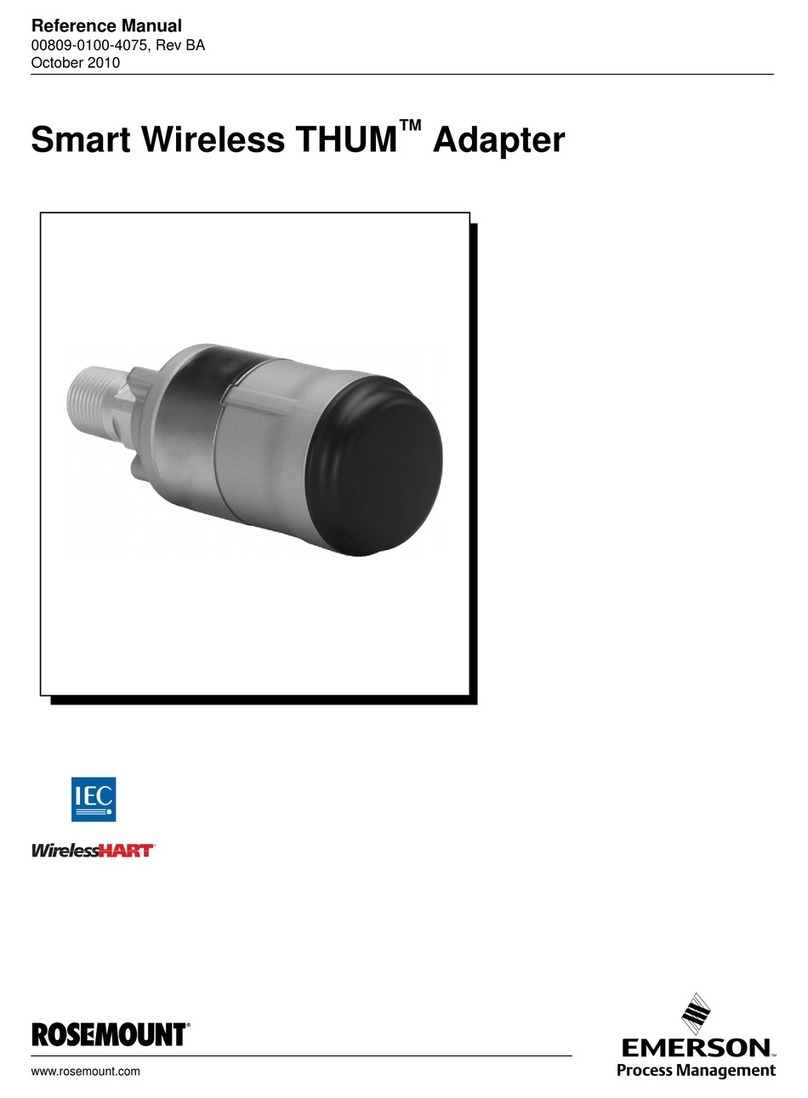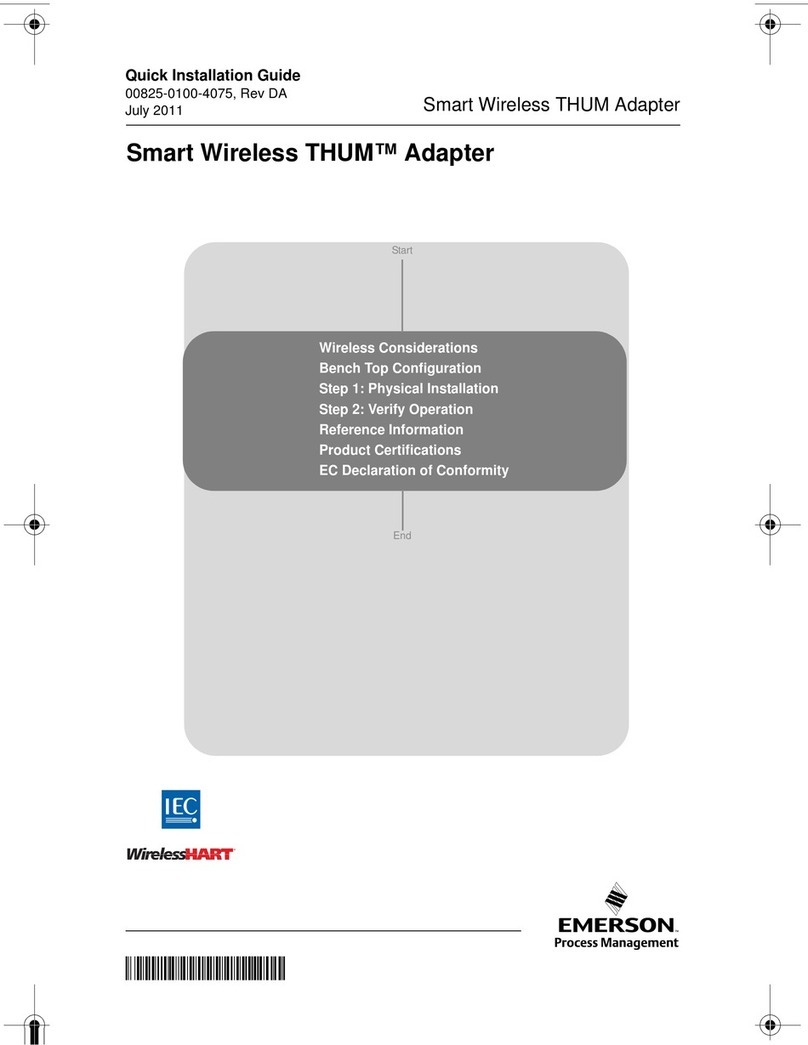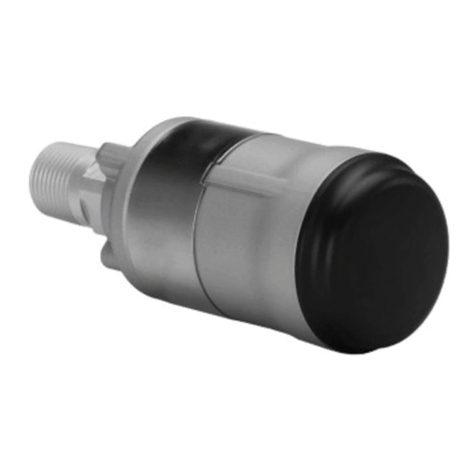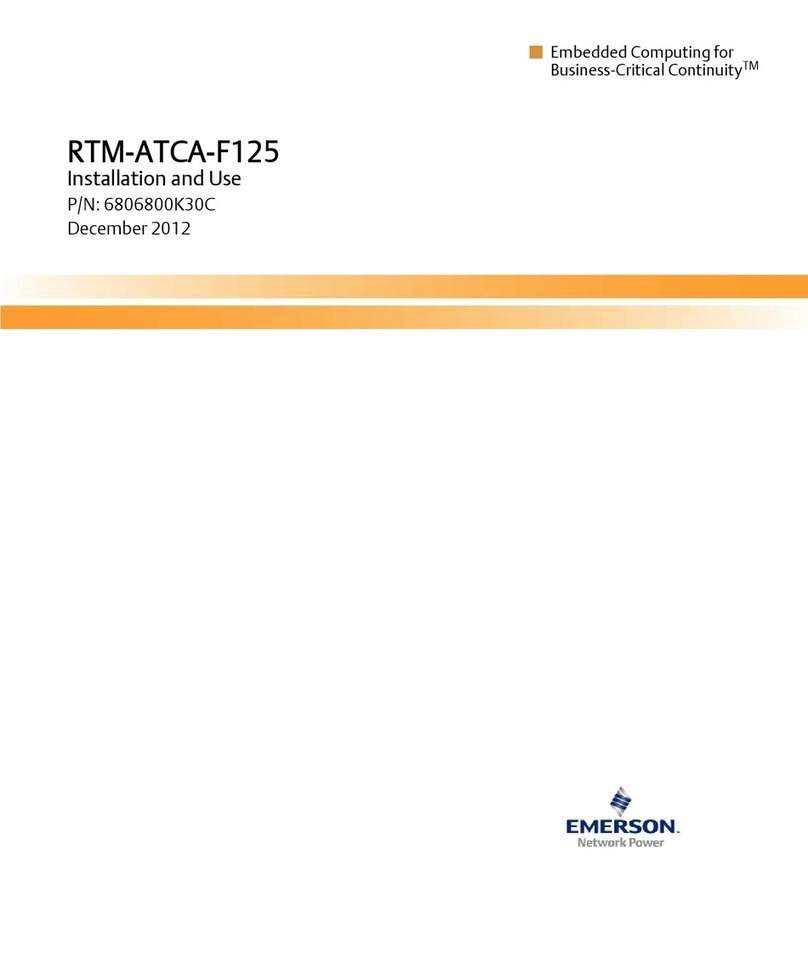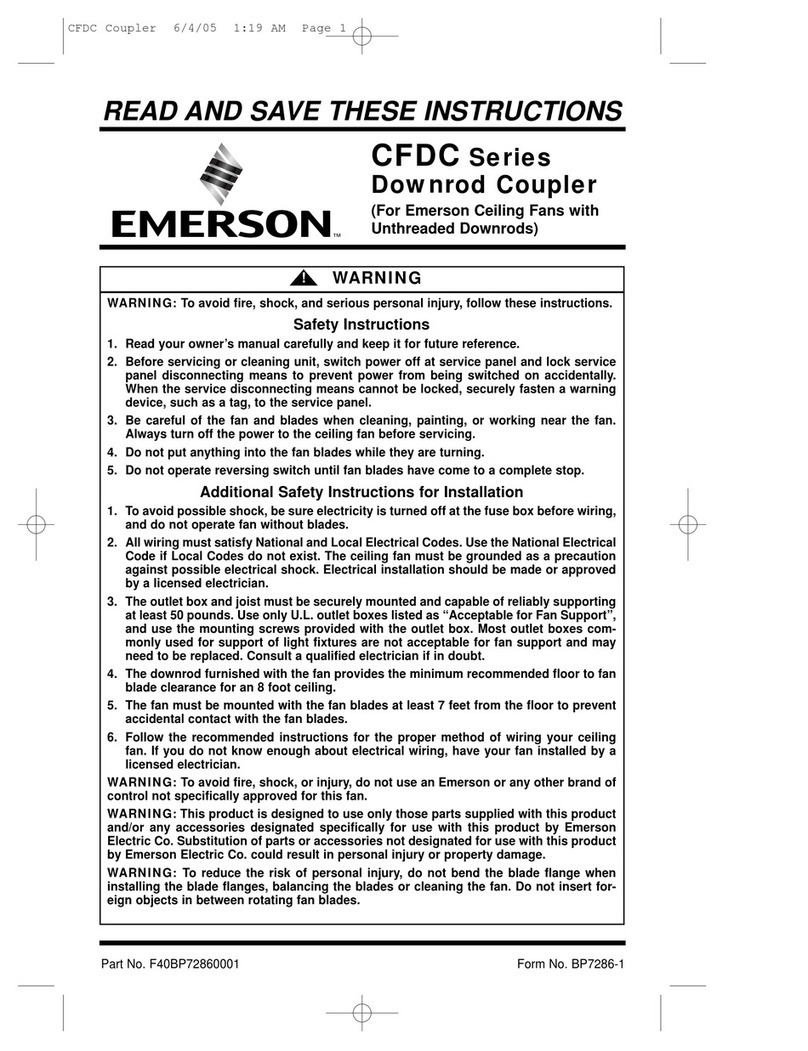
June 2016
2
Quick Start Guide
NOTICE
This guide provides basic guidelines for the Emerson Smart Wireless THUM Adapter. It does not provide
instructions for detailed configuration, diagnostics, maintenance, service, troubleshooting, or installations.
Refer to the THUM Adapter Reference Manual (document number 00809-0100-4075) for more instruction.
The manual and this guide are also available electronically on www.rosemount.com.
This device complies with Part 15 of the FCC Rules. Operation is subject to the following conditions. This
device may not cause harmful interference. This device must accept any interference received, including
interference that may cause undesired operation.
Explosions could result in death or serious injury.
Installation of this transmitter in an explosive environment must be in accordance with the appropriate local,
national, and international standards, codes, and practices. Review the Product Certifications section for any
restrictions associated with a safe installation.
Before connecting a Field Communicator in an explosive atmosphere, ensure the instruments are installed
in accordance with intrinsically safe or non-incendive field wiring practices.
Electrical shock can result in death or serious injury.
Avoid contact with the leads and terminals. High voltage that may be present on leads can cause electrical
shock.
This device must be installed to ensure a minimum antenna separation distance of 7.87-in. (20 cm) from all
persons.
During normal operation, or in fault condition, the THUM Adapter will cause a 2.5 V drop in the connected
loop. It is important to ensure that the power supply can provide at least 2.5 V more than the minimum
operating voltage of the wired device to make sure it works properly with the THUM Adapter installed. To
determine the minimum operating voltage for the wired device, review the wired device operation and
installation manual.
Contents
Wireless considerations . . . . . . . . . . . . . . . . . . . 3
Bench top configuration . . . . . . . . . . . . . . . . . . . 5
Physical installation . . . . . . . . . . . . . . . . . . . . . . . 6
Direct mount . . . . . . . . . . . . . . . . . . . . . . . . . . . . 6
Remote mount . . . . . . . . . . . . . . . . . . . . . . . . . . . 7
Device network configuration . . . . . . . . . . . . . 20
AMS Wireless Configurator . . . . . . . . . . . . . . . 20
Field Communicator . . . . . . . . . . . . . . . . . . . . . 21
Loop current test . . . . . . . . . . . . . . . . . . . . . . . . 21
Verify operation . . . . . . . . . . . . . . . . . . . . . . . . . 23
Reference information . . . . . . . . . . . . . . . . . . . 24
Product Certifications . . . . . . . . . . . . . . . . . . . . 25
